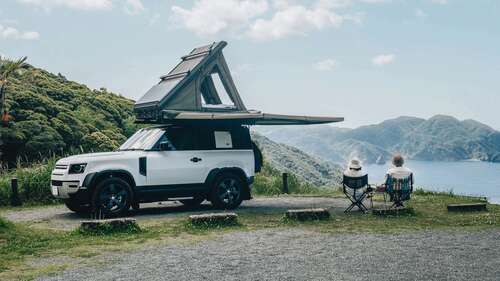
Since your vehicle will serve as your shelter, cargo hauler, and transportation through the thick of it, you should consider its limits and abilities. If your current vehicle won’t cut it (your small sports car might be fun to drive, but it’s probably not fit for overlanding), you may want to consider buying an overlanding vehicle. Four-wheel-drive vehicles are ideal, though vans can also provide extra living space. ATV motorcycles are also well-equipped for the rough roads ahead, as long as you pack lightly.
Pickup trucks with bed caps are basically ready to go since you simply need to pop a mattress in the back and load up your supplies. Alternatively, you can use a convertible camper, a tent-like shelter set up on the roof, or a truck bed. The Roofnest Condor Overland 2, for example, offers ample space and a durable all-weather design. However, it’s fairly bulky, even when packed down, and the setup can take a while. Furthermore, it works best when set up on a truck bed.
The chariot you choose is ultimately a question of your off-roading preferences. Indeed, if your vehicle can’t handle a long trip on a paved road, it certainly won’t make it through 1,000 miles of mud, stone, and gravel. Make sure your vehicle is capable of long excursions.
You don’t want to break down in the middle of nowhere. You should give your vehicle a thorough inspection and tune-up before you leave. That means changing the oil, cleaning or replacing the filters, checking the brake, power steering, and transmission fluid, and prepping anything else that demands attention. Also, if your tires are worn out, you’ll have to replace them.

